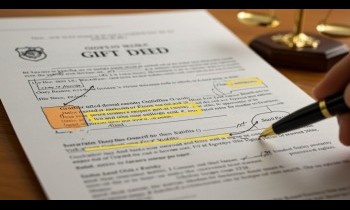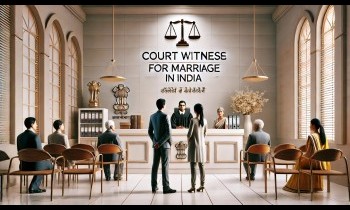What is Limitation Act 1963?

Date : 03 Jul, 2020
Post By Kumkum Sharma
The Limitation Act, 1963 is the Act governed a time period in which a person can file a suit to sue another to get justice. If the suit is filed after the expiration of time period as specified in this limitation act, thus, it will be bared or cannot be maintained in a court. It also includes provisions for condonation, delay etc. The Limitation Law was firstly established in 1859 which came into exist in 1862. The law of limitation developed in stages and finally comes in the form of Limitation Act in 1963. It was enacted on 5th October, 1953 and came into force from 1st January, 1964.
Why should we adopt the Limitation Act?
The main objective of the Limitation Act, 1963 is to provide a specific time frame in which a person can file a suit in a court. If such law came not in exist then it will lead to never ending litigation as the person can file a suit for the cause of action which was done many years back. It prevents disturbance in society by suppressing fraud and perjury. In other words the law of limitation aims to protect the lengthy process of penalizing a person indirectly without an offence. In Balakrishnan v. M.A. Krishnamurthy, AIR 1988 SC 3222 it was held by the Supreme Court that the Limitation Act is based upon a public policy which is used for fixing a life span of a legal remedy or unnecessary delay for the purpose of general welfare.
Legal Principles are everywhere!
Article 137 of the limitation Act state will apply to any petition or application of any act filled civil court but it is not limited to the Code of Civil Procedure of which time frame is not mention in Limitation Act.
Section 3 of the act time limits of filling suit /Appeal/Application or other proceedings would be barred. This section equally lies on general public and also government through special time period prescribe for the state in section 25 of article 112 of limitation act. The construction of this section in which a suit, appeal or application is dismissed if it barred by the time period prescribed by legislature. Limitation is not pleaded in defense except when such limitation is extended by the provisions of section 4 to 24 (inclusive) applicable of such suit, Appeal or application. However, It does not attracted to ever case. Section 3(1) extends to suit as well as appeals and application.
Section 4 of the act provides that such prescribed time of suit appeal or application expires on a date when the courts are closed. The proceeding may be held when the court re opens.
Section 5 of the act provides an appeal or application other than mention in Order XXI of the code of civil procedure, may be admitted after the prescribed period in this act as per the discretion of the court if the party satisfied the court by the sufficient cause of delay for not making such application within time frame. It is also noted that this section is applied only on the appeals and applications or not to the suits.
Sufficient cause for Condonation of Delay
What constitutes sufficient cause has not specifically as hard and fast rule. The court is required to look into all the facts of the case. The question has to be decided on the facts and circumstances existing in particular case. No doubt it is a discretionary power of the court but such discretion will be exercised on sound judicial principle or not mere fancy or whims of the court. No court shall exercise its power in arbitrary manner not can act in vague manner. Sufficient cause may be determined by reference to the circumstances of the case such as:
(I) whether the cause which withheld him for filling the appeal within the time was beyond the control of the party;
(ii) Whether the party exercised sufficient care and diligence in filling the appeal;
(iii) Whether his intention was bonafide.
Following are some examples of “sufficient cause”
Mistake of counsel: A legal adviser’s mistake is a bona fide is a sufficient cause.
Mistake of Clerk of an advocate: if the clerk of an advocate commits a mistake, it may be condoned if it bona fide on the technical ground.
Illness: A mere plea on illness itself, unless the effect of itself was such that in circumstances it would afford reasonable excuse for the delay in the presenting in appeal, such illness must be in serious in nature.
Imprisonment: imprisonment in a criminal jail is may be considered as sufficient cause and the time spent in jail may be condoned.
Mistake or ignorance of law: ignorance of the law is not a sufficient cause. But it cannot be laid down as general position that ignorance of law cannot be regarded as sufficient cause. It may be laid down when such mistake is bona fide one, it can be considered as sufficient cause in this section ex. A wrong advice given by legal advisor.
Minority: if it is a factor to be taken into account when considering circumstances which justify the application for the extension of time should be more liberally constructed in favor of minors other than litigants. When the guardian’s failure to appeal was due to his strong personal motive for not appealing which was opposed to the interest of the minor. It was held that it was a sufficient cause for extending time.
Other grounds: Although government as such is not entitled to any special consideration under section 5; the time taken by the state government to communicate with the legal advisor of the central government may, in certain circumstances will be excused.
In Ram Nath Sao v. Gobardhan Sao, AIR 2002 SC 1201 it was held by the Supreme Court that the expression “sufficient cause” within the meaning of section 5 should receive a liberal construction so as to the advance substantial justice when no negligence or gross negligence or lack of bona Fidel is imputable as a party. What is “sufficient cause” is depends on the facts or circumstances of each case. There cannot be straightjacket formula for accepting or rejecting explanation furnished for the delay.
In the case of State of Jammu and Kashmir v/s Ghulam Rasool Rather The expression "sufficient cause" in section 5 of the Limitation Act should receive a liberal construction so on advance substantial justice. Rules of limitation aren't meant to destroy the rights of the parties. They are meant to ascertain that parties don't resort to deliberate tactics, but seek their remedy promptly. While considering a case for condonation of delay, the court should remember that in every case of delay there are often some lapses on the part of the litigant concerned. That alone isn't sufficient to show down his plea and shut the door against him. If the reason doesn't smack of mala fides or it's not put-forth as a part of a dilatory strategy the court must show utmost consideration to the suitor. But when there's reasonable ground to think that the delay was occasioned by the party deliberately to realize time, then the court should lean on acceptance of the reason. The discretion exercised within the matter of condonation of delay should be proper and judicious.
The law of Limitation and Condonation of Delay are two effective implementations within the quick disposal of cases and effective litigation. On the one hand if the law of limitation keeps a check on the pulling of cases and prescribes a period of time within which the suit are usually filed in time available within which the person can get the remedy conveniently. The law of Condonation of Delay keeps the principle of natural justice alive and also states the very fact that different people may need different problems and therefore the same sentence or a singular rule might not apply to all or any of them within the same way. Thus it's essential to listen to them and choose accordingly whether or not they slot in the standards of the judgement or whether or not they deserve a second chance.
Computation of the period of Limitation
Part III of the Limitation Act, 1963 deals with the computation of the period of the limitation. The rules of computation a period of limitation are not intended by the legislature to apply only to period of limitation prescribed by the schedule but apply also to periods of limitation provided for by other enactments; Durag v. Pancham, AIR 1969 AII 403 (FB). The computation periods exclude the day on which such period is to be reckoned. In case any appeal or application for review or revision has been filed on the day in which the judgment is pronounced shall be excluded from the computation period and also the time period taken to get copy of the judgment or order shall also be excluded. Thus time period starts from the day in which the order of the judgment is received. The limitation of filling of an appeal before the court commences from the date of judgment and not the date of decree is signed: Basavarajappa v. M.S. Channabasappa (1991) 2 CCC 20 (Karn).
Conclusion
The principal of Limitation Act,1963 is based on the maxim interest republic ut sitis finis litium; which means the interest of the state should requires that there should be end of litigation to stop what may have acquired in equality and justice by long enjoyment or what may are lost by the party’s own inaction or negligence. The rule of limitation does not mean to destroy the rights of the public. It only purpose is the plaintiff does not delay unnecessarily or seeks remedy within the time frame stipulated by legislature. The right of the person continues to exist even after the remedy barred by legislature. A debtor may pay a debt even after a time barred debt and does not claim back on the limitation barred plea.
How can Lawtendo help?
LawTendo has around 15000+ lawyers across India in our platform. LawTendo strives to facilitate cost-efficient and quality legal service to our clients. You can contact us at +91-9671633666 or info@lawtendo.com.





